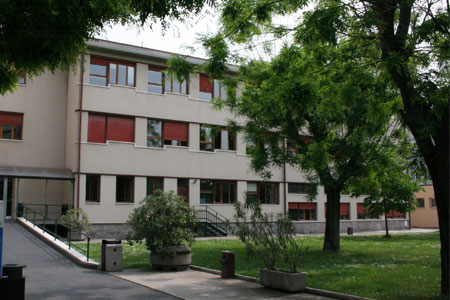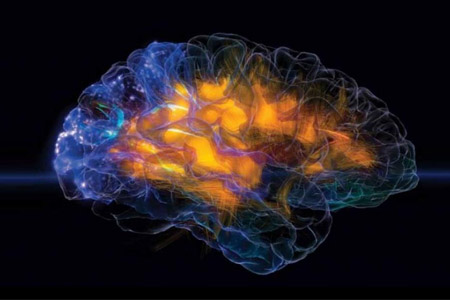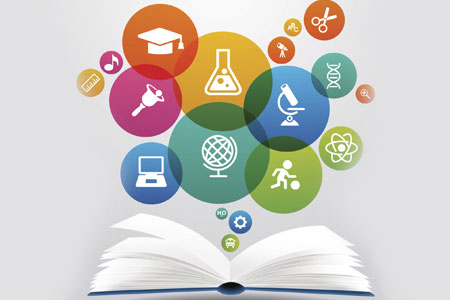-
Anthropometry Laboratory
-
This laboratory is equipped with instruments suitable for anthropometric and body composition analyses, and for the kinematic and kinetic analysis of the sport motion.
Details:
Instruments are available for manual and digital anthropometric analyses (body scanner 3D), total body and regional DXA, echography and plicometry. The Laboratory is also provided with vibration plates and with instruments for the kinematic and kinetic analysis of the sport motion (VICON, force plates, dynamometric starting block, video analysis, radar gun)
-
Attention and Eye movements Lab
-
The lab is located at the Section of Physiology and Psychology and comprises two experimental set-ups for the collection of behavioural and eye-movement data, as well as an experimenter workstation.
-
Behaviour Laboratory
-
This laboratory is equipped with instruments for the behavioural and neurophysiological characterization of laboratory animals.
Details:
The laboratory is made of independent setups completely isolated acoustically and thermically, and is equipped for EEG telemetry plus Video synchronization and for a wide spectrum of behavioural tests on mice and rats.
-
Biomechanics and motor control laboratory
-
-
Cardiovascular Physiology Laboratory
-
-
Cell Proliferation Laboratory
-
This laboratory is equipped with laminar flow cabinets and incubators for cell and organ cultures, and with instruments for biomolecular analyses.
-
Cellular Neurophysiology and Neurobiology Laboratory
-
Electrophysiological recordings of cells in cultures and on slices of tissue.
-
Chromatography Lab
-
In the Biological Chemistry Section one room is dedicated to host two Fast-Performance Liquid Chromatographers (FPLC), in particular one AKTA Prime and one AKTA FPLC, devoted to the purification/analysis of proteins, and of two High-Pressure Liquid Chromatographers (HPLC) for proteins and small molecules. Moreover, a lyophilizer is present, and several electrophoresis devices distributed almost in all laboratories deserve to be mentioned
-
Cognitive Neurosciences Laboratory
-
-
Imaging Laboratory
-
This laboratory, which is run in collaboration with the Centro Piattaforme Tecnologiche (CPT) and the Department of Computer Science, is equipped with a magnetic resonance tomograph for small animals and an optical imager, and with the necessary instruments for all the pre- and post-acquisition procedures.
-
Laboratories of Applied biology and molecular genetics
-
Functional gene expression analysis
-
Laboratory for the Neurophysiology of Attention
-
-
Laboratory of Clinica Chemistry, Hematology and Clinical Molecular Biology
-
Two sub-laboratories are available "Clinical Experimental Pathology" and "Clinical Research”), which perform in vivo and in vitro studies on pre- analytical variability, immunochemistry, cytofluorimetry, aggregometry, microscopy and molecular biology. The Section has participated and still participates in many national and international research projects, and is a reference center for the evaluation of new laboratory technologies and for the clinical validation of biomarkers used for prevention, diagnosis and therapy. The Section also participates in Phase 1, 2 and 3 clinical trials involving departments of the Verona University Hospital and other international structures. Teaching activity: The Section is involved in the lessons included within the study plan of the Degree in Medicine and Surgery, Degree Courses in Dentistry, the Degree Course in Bioinformatics and Medical Biotechnologies, in the Degree Courses of Health Professions and in Schools of specialization. Clinical activity: Rationally divided between the two structures belonging to the two Hospitals, the Operative Unit uses the latest generation of diagnostic technologies for performing routine tests (clinical chemistry, coagulation, blood count, urinalysis, therapeutic drug monitoring), specialized tests (endocrinology, oncology), second and third level analyses (for example for diagnosis of hemorrhagic diseases, cystic fibrosis, hemophilia, hemoglobinopathies, prenatal diagnosis), molecular and genetic biology testing . Recently, the acquisition of new instrumentation to perform genomics, pharmacogenomics and proteomics analysis has been completed, with a view to overcoming the classical diagnosis and treatment approach with a new patient-centered clinical vision in which, using specific analyzes, the individual profile of the subject is analyzed (personalized medicine).
-
Light and Electron Microscopy Laboratory
-
This laboratory is equipped with optical microscopes (bright field, differential interference contrast, fluorescence) and with transmission and scanning electron microscopes; all the instrumentation for preparing cyto-histological specimens and for image analysis are also available.
-
Movement Cynematics Lab
-
The lab is located at the Section of Physiology and Psychology, and offers the opportunity to measure simultaneous upper limb- and eye-movements in human participants.
-
Neuropathology Laboratory
-
-
NEXUS Electrophysiology Lab
-
The lab offers the possibility of investigating the physiological properties of single neurons in vivo in the context of complex behavioral tasks.
-
NEXUS Human Behavior and Psychophysics Lab
-
The laboratory is located at the Section of Physiology and Psychology and allows the administration of computerized paradigms for the study of perceptual and cognitive mechanisms with a psychophysical and behavioural approach.
Research activity:
1. Investigating the behavioral correlates of attentional learning processes, notably reward-mediated attentional learning and statistical learning in the attentional domain
2. Investigating the attentional mechanisms for distractor filtering
-
NEXUS TMS Lab
-
The laboratory is located at the Section of Physiology and Psychology and allows the administration of transcranial magnetic stimulation (TMS) in human subjects as they perform computerized paradigms studying the working of perceptual and cognitive processes.
-
Perception and Awareness Laboratory
-
The laboratory is located at the Section of Physiology and Psychology, within Block A of the Biolofical Institutes, Floor 2, Room 2.21. The main applications of the laboratory concern the study of perception and awareness in healthy subjects and neurological patients. Behavioural, psychophysics, electrophysiology (EEG), brain imaging (fMRI, fNIRS) and non-invasive brain stimulation (TMS and intraoperative electrocortical mapping) techniques are applied, in isolation or jointly, on healthy subjects and brain-damaged patients with visual field defects or neglect.
Research activity:
The research activity is aimed at investigating:
• How, when and where in the brain perceptual awareness is generated,
• How we can deceive perception by breaking the rules underlying vision,
• The role of attention and memory in visual awareness,
• How perceptual awareness changes when the coherent representation of the outer world is lost after a brain damage.
Person in charge: Silvia Savazzi, website: http://panda.dsnm.univr.it/
Equipment:
• 32-channel system (BrainAmp) for TMS-compatible EEG recording: A monopolar amplifier for electroencephalographic signal recording complete with a 64-channel input box and several 32-electrode caps.
• 64-channel system (BrainAmp) for TMS-compatible EEG recording: Two monopolar amplifiers for electroencephalography (BrainAmp DC) complete with a 64-channel input box and different 64-channel caps with active electrodes (ActiCap).
• 16-channel system (BrainAmp ExG) for the recording of motor potentials and physiological indices: Bipolar amplifier with 16 electrodes (ExG) for the recording of motor electric signals and physiological indices (e.g. heart rate, psychogalvanic response, etc.).
• Transcranial magnetic stimulator (Magstim rapid2) + neuronavigator (SofTaxic, EMS) with 3D optical digitizer (Vicra): high frequency Transcranial magnetic stimulator (TMS, Magstim) (Rapid2) complete with circular/butterfly/refrigerated coils for different stimulation protocols + a hardware-software system (SofTaxic, EMS + Vicra) of digitization of the coil position on the scalp and reconstruction of the stimulated cortical area.
• Imagent system (ISS Inc., Illinois, USA) for near infrared spectroscopy + neuronavigator (SofTaxic, EMS) with 3D optical digitizer (Vicra): optical system in frequency modulation for the acquisition of both slow (hemodynamic) than fast optical signals (event-related, EROS) with 8 detectors and 64 light emitters at two wavelengths (690 and 830nm) accompanied by helmets for the positioning of the fibers + hardware-software system (SofTaxic, EMS + Vicra) for digitization of the position of sensors on the scalp and the reconstruction of brain images.
• System for the presentation of stimuli and collection of behavioral responses for fMRI (at AOUI, B.go Roma): NNL 32" LCD monitor + NNL response grip with 2 buttons per hand + MRC camera for eye movement recordings and related software.
-
Physiology of muscular exercise laboratory
-
-
Vision Psychophysics Lab
-
The laboratory is located at the Section of Physiology and Psychology. It allows the administration of psychophysics experiments investigating visual perception.
-
Laboratorio di Biologia molecolare
-
Analisi molecolari di interazioni virus-cellula.
Analisi molecolari di differenziamento cellulare.
-
Laboratorio di Genetica umana, diagnostica molecolare e bioinformatica
-
Attività sperimentale basata su analisi molecolari, analisi statistiche e bioinformatiche
-
Laboratorio di spettroscopia-interazioni
-
Analisi spettroscopiche di macromolecole







